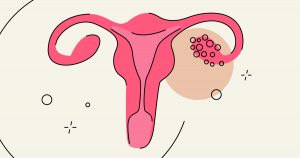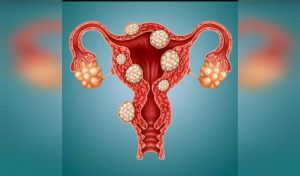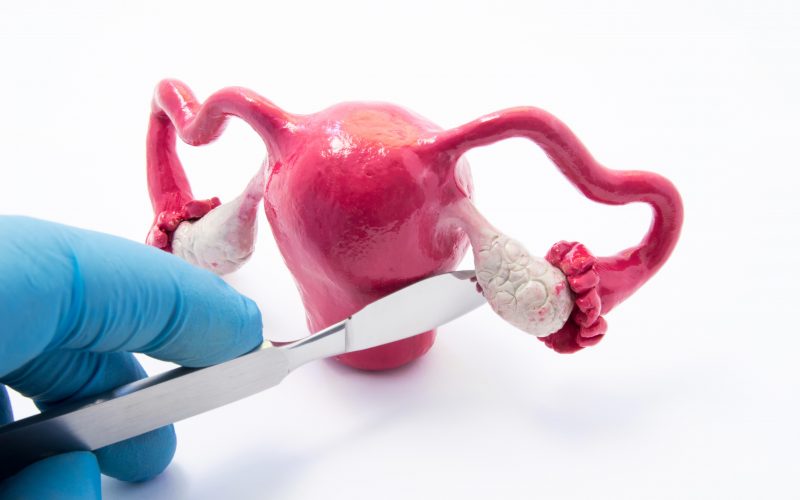An ovarian cyst is a neoplasm of a benign nature, localized directly in the tissues of the ovary. The word “cyst” comes from the Greek word kystis – a bubble. A cyst is actually a cavity filled with fluid.
An ovarian cyst is a neoplasm of a benign nature, localized directly in the tissues of the ovary. The word “cyst” comes from the Greek word kystis – a bubble. A cyst is actually a cavity filled with fluid. There are several types of cysts that differ in origin.
Types of ovarian cysts
A functional cyst is typical for women of reproductive age. Occurs when the hormonal system malfunctions. The types of functional cysts include the follicular cyst and the corpus luteum cyst. Every month, one, or even several, follicles mature in the ovary of each woman. They contain an egg, which at the time of ovulation leaves the ovary and enters the fallopian tube. In place of the follicle, a corpus luteum develops, which produces hormones necessary to maintain pregnancy. If the pregnancy has not frowned, the corpus luteum disappears. A follicular cyst is formed if the follicle has matured, but ovulation has not occurred for some reason. A single-chamber follicle begins to grow and fill with fluid, while its walls become thinner. If such a cyst is small, then it may not manifest itself in any way: usually such cysts are found by chance during an ultrasound examination of some other organ.
Functional cyst symptoms
Symptoms include menstrual irregularities and pain during menstruation. If the cyst reaches a large size (more than 8 cm), then ovarian tissue necrosis or rupture of the cyst with the release of its contents into the abdominal cavity is possible, which entails the development of a symptom of an acute abdomen. A cyst of the corpus luteum is manifested by the accumulation of fluid (often blood) in the cavity of the corpus luteum. A serious complication of such a cyst is the rupture of the ovary with bleeding, while the woman has severe pain in the lower abdomen. But often such cysts go unnoticed and do not manifest themselves in any way, resolving on their own.
The dermoid cyst is the rudimentary elements of the adnexal tissues of the body formed during the development process. In such cysts, teeth, hair, bone fragments, adipose tissue are found immersed in a viscous liquid and surrounded by a thick capsule. Such a cyst grows slowly but constantly. When it reaches a large size, it presses on neighboring organs, causing unpleasant pain in the lumbar region. Complications are suppuration, torsion of the cyst leg and, extremely rarely, malignancy.
An endometrioid cyst occurs when endometrial cells (normally found only in the uterus) end up in the ovary. The endometrium, just like in the uterus, is rejected monthly, and the blood released during this is delimited by a capsule inside the ovary. The cyst grows with each new menstrual cycle and can degenerate into a malignant tumor.
A true ovarian cyst (cystadenoma) is of several types: serous cystadenoma and mucinous cyst. Depending on the type, it can consist of one or several cameras. Requires surgical removal, as it has a high potential for malignancy.
What are the main symptoms?
The main symptoms of ovarian cysts:
Pain in the lower abdomen, aggravated by the onset of the menstrual cycle.
Painful intercourse.
Violation of urination.
Menstrual irregularities (delayed menstruation, intermenstrual bleeding).
Nausea, vomiting, severe pain in the abdomen, increased body temperature (a picture of an acute abdomen) – is typical when the cyst is twisted or ruptured.
Have you experienced one or more symptoms?
Then you should seek the help of an experienced gynecologist. Frau Clinic specialists have been working in this field for many years and will help you undergo a series of diagnostic examinations to determine the stage and form of the disease. A gynecological examination will reveal changes in the appendages, soreness, and, possibly, the presence of the cyst itself (if its size is significant). The most informative method is ultrasound examination using a transvaginal and transabdominal transducer. Also, laparoscopy and computed tomography are used for diagnostics.
Cyst treatment
If the ovarian cyst https://en.wikipedia.org/wiki/Ovarian_cyst has become the cause of a violation of the hormonal system, then the treatment is carried out with hormonal drugs, which are selected individually for each patient. Such therapy is effective in the presence of functional cysts and leads to their complete disappearance after 5-6 months, if this does not happen, then an operation is performed to remove the ovarian cyst. Therapy is usually complemented by physiotherapy and immunity-enhancing medications. Surgical intervention is also typical for the treatment of non-functional cysts. One of the most advanced surgical techniques is laparoscopy. In this operation, the doctor removes the affected area through three small incisions in the anterior abdominal wall. This operation allows you to leave intact healthy ovarian tissue and its reproductive function. In some cases, hysterctomy (removal of the uterus and appendages) and oophorectomy (removal of the cyst together with the ovary) are used for treatment. Such radical operations are carried out in cases of a true tumor process.
